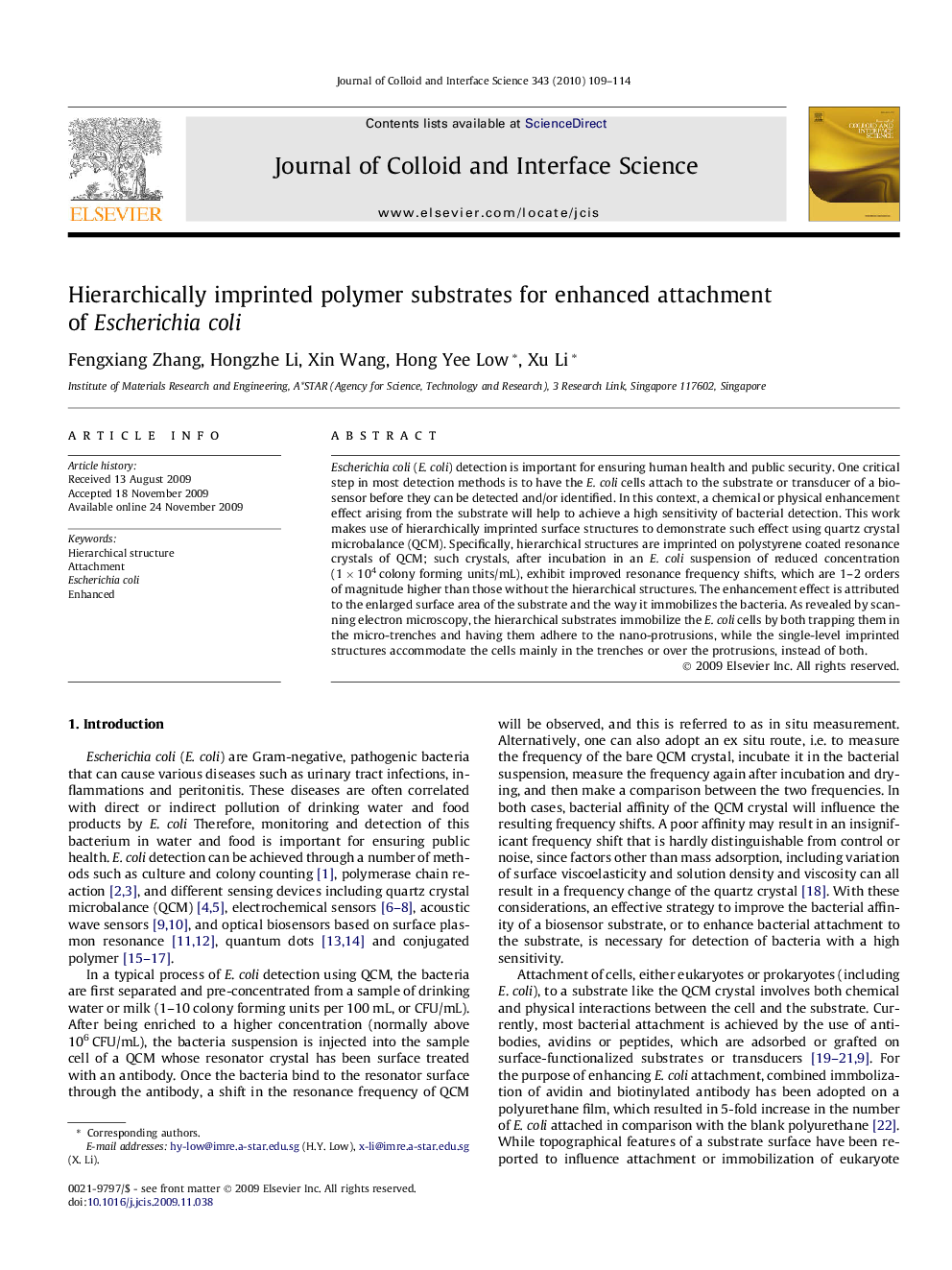| Article ID | Journal | Published Year | Pages | File Type |
|---|---|---|---|---|
| 609416 | Journal of Colloid and Interface Science | 2010 | 6 Pages |
Escherichia coli (E. coli) detection is important for ensuring human health and public security. One critical step in most detection methods is to have the E. coli cells attach to the substrate or transducer of a biosensor before they can be detected and/or identified. In this context, a chemical or physical enhancement effect arising from the substrate will help to achieve a high sensitivity of bacterial detection. This work makes use of hierarchically imprinted surface structures to demonstrate such effect using quartz crystal microbalance (QCM). Specifically, hierarchical structures are imprinted on polystyrene coated resonance crystals of QCM; such crystals, after incubation in an E. coli suspension of reduced concentration (1 × 104 colony forming units/mL), exhibit improved resonance frequency shifts, which are 1–2 orders of magnitude higher than those without the hierarchical structures. The enhancement effect is attributed to the enlarged surface area of the substrate and the way it immobilizes the bacteria. As revealed by scanning electron microscopy, the hierarchical substrates immobilize the E. coli cells by both trapping them in the micro-trenches and having them adhere to the nano-protrusions, while the single-level imprinted structures accommodate the cells mainly in the trenches or over the protrusions, instead of both.
Graphical abstractHierarchically patterned polymer substrate significantly enhances E. coli attachment as compared with purely micro- or nano-patterned surfaces.Figure optionsDownload full-size imageDownload high-quality image (112 K)Download as PowerPoint slide
